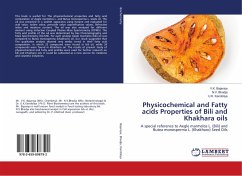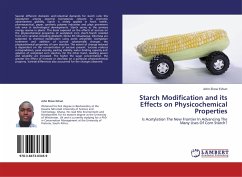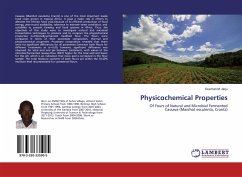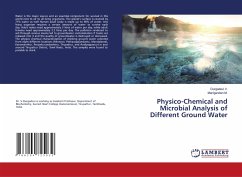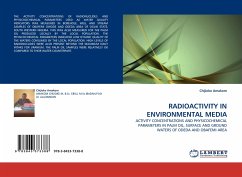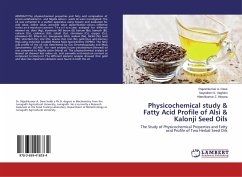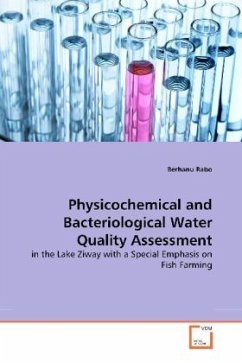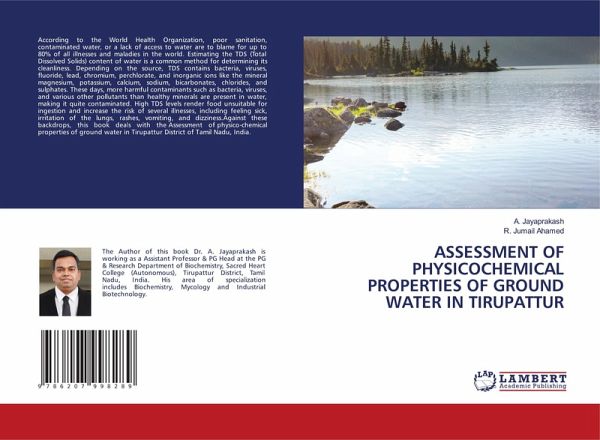
ASSESSMENT OF PHYSICOCHEMICAL PROPERTIES OF GROUND WATER IN TIRUPATTUR
Versandkostenfrei!
Versandfertig in 6-10 Tagen
29,99 €
inkl. MwSt.

PAYBACK Punkte
15 °P sammeln!
According to the World Health Organization, poor sanitation, contaminated water, or a lack of access to water are to blame for up to 80% of all illnesses and maladies in the world. Estimating the TDS (Total Dissolved Solids) content of water is a common method for determining its cleanliness. Depending on the source, TDS contains bacteria, viruses, fluoride, lead, chromium, perchlorate, and inorganic ions like the mineral magnesium, potassium, calcium, sodium, bicarbonates, chlorides, and sulphates. These days, more harmful contaminants such as bacteria, viruses, and various other pollutants t...
According to the World Health Organization, poor sanitation, contaminated water, or a lack of access to water are to blame for up to 80% of all illnesses and maladies in the world. Estimating the TDS (Total Dissolved Solids) content of water is a common method for determining its cleanliness. Depending on the source, TDS contains bacteria, viruses, fluoride, lead, chromium, perchlorate, and inorganic ions like the mineral magnesium, potassium, calcium, sodium, bicarbonates, chlorides, and sulphates. These days, more harmful contaminants such as bacteria, viruses, and various other pollutants than healthy minerals are present in water, making it quite contaminated. High TDS levels render food unsuitable for ingestion and increase the risk of several illnesses, including feeling sick, irritation of the lungs, rashes, vomiting, and dizziness.Against these backdrops, this book deals with the Assessment of physico-chemical properties of ground water in Tirupattur District of Tamil Nadu, India.





